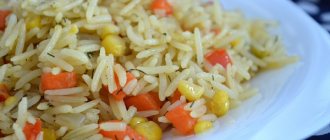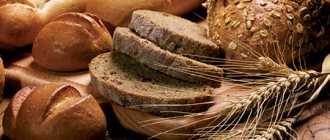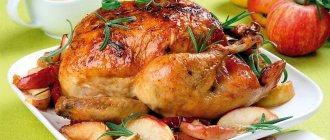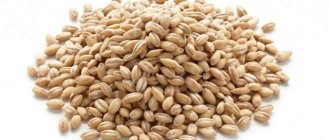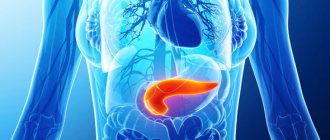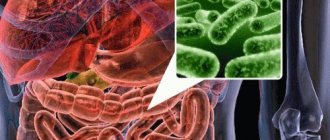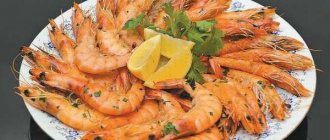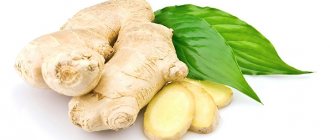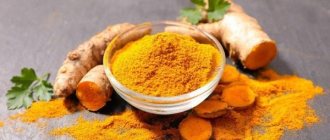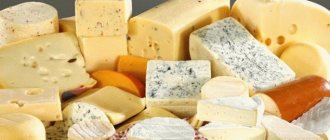Gardening » Apple tree
1
660
Article rating
Kira Stoletova
One of the most common fruits that is available all year round is apples. These fruits can be consumed raw, baked, dried and in juice form. For pancreatitis, apples can be included in the diet, but this should be done according to the recommendations and instructions of specialists.
How to eat apples with pancreatitis
Is it possible and what varieties?
Use for fresh food or preparation of dishes and drinks within the established diet should only be:
- well-ripened soft fruits;
- no damage or mold;
- sweet varieties;
- not subjected to chemical treatment during collection and storage;
- thoroughly washed to neutralize nitrates;
- peeled to remove coarse dietary fiber.
Fruits are best consumed during the high season when their nutritional content is at its highest.
A patient who suffers from pancreatitis can eat White filling apples.
Apples with a high acid content provoke painful cramps and can upset the balance in the gastrointestinal tract, so they are excluded.
Preferred apple varieties for such patients:
- White filling.
- Golden Delicious.
- Fuji.
- Gala.
- Jonagold.
When eaten fresh, it is best to eat fruits that are green, white, or yellow in color, while bright red and orange ones should be introduced carefully and be sure to be heat-treated.
In acute form
During a painful attack, the patient is advised to completely fast for the first few days. During this period, any meals are excluded to restore pancreatic function. Therefore, apples are a product that is prohibited.
As restrictions are lifted, diluted apple juice is gradually introduced into the menu as a source of vitamins to restore strength, give the sick body energy and good health.
As restrictions are lifted, diluted apple juice begins to be introduced into the menu.
At the next stage, one small sweet baked apple per day is included in the diet, and then, as the condition improves, boiled and then fresh fruits are pureed.
However, for several weeks there remains a limit on the amount of fruit allowed - no more than 1 apple per day.
In the chronic stage
When pancreatitis enters a chronic, sluggish stage, apples are included in the menu in the form of desserts (except for yeast or fatty puff pastries).
These can be fruit puddings, mousses, jellies, souffles, marshmallows, marshmallows.
When preparing them, you should limit yourself to a minimum amount of sugar. Fresh apples can be used as a component of fruit or vegetable salads.
During exacerbation of the disease
If the disease manifests itself as acute inflammation of the pancreas, the inclusion of acidic and fiber-rich foods in the menu should be minimized, so apples should be eaten no more than several times a week only in heat-treated, additionally pureed form and in small quantities.
During exacerbation of pancreatitis, you can eat apples in small quantities.
Cholecystopancreatitis
An important property of apples for this disease: they can reduce the urge to vomit and eliminate attacks of nausea.
Therefore, during the period of remission, patients with inflammation of the gallbladder can include apples in their diet, guided by general principles.
For pancreatitis and gastritis
For gastritis with high acidity, it is especially important to choose fruits with a minimum acid content so as not to irritate the inflamed walls of the stomach.
Preference is given to baked apples, which are even considered a good remedy for relapses of this disease.
They have an anti-inflammatory effect, improve digestion, and normalize the functioning of the gastrointestinal tract. It is not advisable to eat apples on an empty stomach.
In what form can it be eaten?
A large number of dishes can be prepared from these delicious fruits.
You can add a small amount of sugar to healthy apple dishes.
General recipe rules:
- Minimal added sugar.
- Elimination of fatty additives (cream, margarine, butter).
- Consume warm or chilled (hot foods and drinks are prohibited).
Baked
Baked apples are good because their heat treatment not only enhances the taste characteristics, but also reduces the acidity of the fruit and increases the rate of absorption of the dish in the gastrointestinal tract. Such desserts do not provoke the secretory activity of the pancreas.
For baking, the core with seeds and partitions is removed from apples, leaving thick walls and the bottom of the fruit, then the resulting cavity is filled with filling to taste.
The ability to introduce various additives when cooking in the oven allows you to get tasty and dietary dishes.
Popular combinations include baked apples:
- with low-fat cottage cheese and raisins;
- with honey and dried fruits;
- with natural jam and crackers;
- with candied pumpkin;
- with sweet rice.
Baked apples are good because heat treatment enhances their taste characteristics.
When choosing additional ingredients, you should be guided by the products allowed by diet No. 5 and the presence of individual allergies to individual components. You can also bake apples in the microwave, which allows you to reduce the cooking time (in the oven - about 30 minutes, in the microwave - about 10 minutes, in a slow cooker - 25 minutes).
Boiled
Heat-treated apples are easier to digest, so for diseases of the gastrointestinal tract, you can add boiled apples to the menu, sliced or pureed.
They can be consumed as independent dishes, as a side dish for lean meat, poultry, or as an additive to low-fat cottage cheese, casserole or yogurt.
Dried
Dried apples do not irritate the mucous membrane of the stomach and intestines and minimally burden the pancreas.
Therefore, they are recommended for inclusion in the diet due to their beneficial vitamin and mineral composition.
Such dried fruits are rich in potassium, magnesium, and iron, which has a positive effect on the patient’s well-being and his nervous system.
Dried apples do not irritate the mucous membrane of the stomach and intestines and minimally burden the pancreas.
Preference should be given to drying, prepared at home, without sulfur and other chemical treatments.
Mousse
Mousses are prepared from raw or pre-cooked apples.
Gelatin or semolina is used as a thickener.
The dessert preparation sequence is as follows:
- Finely chop 100 g of peeled apples.
- Boil them in 200 ml of water until tender.
- Drain the broth and puree the fruit pulp with a blender.
- Add sifted semolina or gelatin prepared according to instructions to the slightly cooled apple mixture.
- Chill in the refrigerator for 20-30 minutes and then whisk.
Juices
Apple juice should be squeezed out yourself and drunk immediately after preparation, diluted halfway with pure boiled water.
The pancreas heals ITSELF if you eat this PRODUCT
HOW TO SIMPLY BAKE APPLES IN THE OVEN / BAKED APPLES
Apple mousse
For patients in remission, the presence of a small amount of pulp is allowed, since it is an additional source of fiber.
Sugar, citric acid or other spices should not be added to fresh juice.
Compotes
Apple and fruit compotes, as well as jelly, are preferable to juices during exacerbations of diseases.
To preserve most of the beneficial vitamins and microelements, it is recommended to turn off the compote immediately after boiling, leave for several hours, and then, if necessary, remove the fruit and add sugar syrup.
Dried fruits can also be used to prepare this drink.
Pancreatitis, or inflammatory changes in the pancreas, which produces important digestive enzymes, is a disease of people with an unbalanced diet and those who drink excessive amounts of alcohol.
Therapy of the pathological process is primarily based on changes in eating habits through dietary nutrition.
And since the diet for the disease in question is quite strict, most patients wonder what fruits are ok for pancreatitis, since such foods can irritate the pancreas.
Pudding with apples
Peel 3 medium apples, cut them into large slices and bake in the oven until softened. Afterwards, the fruits are removed from the oven and crushed in a blender. A glass of milk is boiled and 3 tbsp is poured into it. L. Semolina, stirring until thickened. Applesauce is mixed with semolina porridge. Separate the whites of 2 eggs and beat them, then add the mass to the cooled apple-semolina mixture, without ceasing to mix. The resulting pudding base is placed in molds and baked in the oven for 30 minutes.
General recommendations
In the presence of such unpleasant symptoms, it is necessary to eat fruits due to the fact that they contain a significant amount of important microelements.
Thanks to proper diet planning, it is possible to normalize your general well-being in the shortest possible time. You need to follow some nutritional rules:
- Fruits and berries are consumed only in processed form. For these purposes, they are allowed to be steamed or added as a side dish.
- During the acute phase, eating raw fruits is prohibited.
- You need to choose ripe fruits that have soft skin and a sweet taste.
- They are not recommended to be eaten on an empty stomach.
- It is necessary to exclude any citrus fruits, sour and bitter fruits from the menu.
By following the above instructions, it is possible to prevent complications with the pancreas.
Is it possible to have fruit for pancreatitis?
It is difficult to give a definite answer as to whether it is permissible to eat fruits during pancreatitis, since the disease can occur in various forms, the treatment of which varies significantly.
The fruits themselves have different characteristics, which does not allow us to derive general rules. The question often arises as to what vegetables are suitable for pancreatitis.
The acute form of the disease, almost always resulting from excessive consumption of alcoholic beverages, is a rather dangerous process that requires emergency hospital treatment.
At this stage, the most effective technique will be fasting. The pancreas should be given rest so that it can recover faster.
It is possible to diversify the diet with fruits in the presence of an exacerbation of the disease only after the condition has normalized. This is done gradually, initially as compotes and jelly, puree. Then non-acidic juices are added.
Only when the pancreas is restored can the diet be rich in ground and then whole fruits.
In chronic pancreatitis, you should eat fruits carefully. Exacerbations may be milder, but they are dangerous. You should choose your food items carefully.
On the first day after an exacerbation, you need to stop eating altogether. When a patient has constant nausea and a gag reflex, eating can aggravate the condition.
However, even in the absence of vomiting, nutrition involves consuming pure water (possibly still mineral water) or rosehip decoction up to 500 g per day.
Fruits, as liquid or semi-liquid dishes prepared from them, are included in the menu if the patient’s well-being has improved significantly.
Initially, the choice is made on unsweetened compotes and jelly.
Sugar provokes an increase in glucose levels in the bloodstream, since the diseased gland is not able to produce the required amount of insulin, which is necessary to convert glucose into energy.
Then mashed fruits, boiled or baked, and natural juices without sugar are added to the menu.
Subsequent improvement in well-being will make it possible to expand the menu, saturating it with mousses, puddings, jellies from natural juice and other delicious desserts made from fruits and berries.
Between exacerbations, you can include a large amount of fruits and dishes in your diet, since fruits are considered not only a dessert, but also a valuable source of useful elements. But in everything you need to observe moderation and follow certain instructions.
What fruits should you eat for pancreatitis?
If the symptoms disappear for a certain period of time, it is necessary to expand the patient’s daily menu to the maximum and include fruits and vegetables for pancreatitis.
It is optimal when the choice is made in favor of seasonal fruits, since they can be taken fresh, removing the skin and core. The most suitable dessert for patients would be dried fruits, from which compotes are made.
- Apples, in the presence of the pathology in question, are considered the most harmless products for patients. They are prepared baked. Before eating fresh fruit, you need to remove the skin and pull out the middle. It is optimal to avoid winter varieties due to the fact that they are characterized by a coarse consistency.
- It is acceptable to eat pears and certain berries from which fruit drinks are made. Apple and pear puree can be eaten after 4 days, when the exacerbation ends. The same applies to bananas. Banana pulp does not require any additional processing.
- During the remission stage, tangerines and oranges are consumed in small pieces. It is not recommended to drink grapefruit and citrus juices due to the fact that they contain a high concentration of acidity. It is acceptable to eat a couple of pieces of melon and pineapple.
- It is also allowed to eat feijoa. Due to the increased concentration of vitamin B, the fruit has a positive effect on the diseased organ.
- Among the variety of berries, the patient is allowed to drink rosehip decoction at different stages of the disease. Cranberries are prohibited for consumption at the stage of exacerbation of pancreatitis. It affects the production of gastric juice, which aggravates inflammation.
- Fresh raspberries and strawberries are not recommended for consumption by patients suffering from pancreatitis. This comes with a lot of sweetness and seeds in the berries. They can be eaten exclusively in boiled jelly, compotes and mousses.
- Grapes are allowed to be consumed in small portions when they are ripe and there are no seeds.
Fruits prohibited for pancreatitis
If the functioning of the digestive tract is impaired, care must be taken when consuming any fruits that have a sour taste and thick skin. These are fruits and berries such as:
- cherry;
- currant.
These berries should be consumed with extreme caution if you have pancreatitis of the pancreas. In the process of consuming them, the gastrointestinal mucosa is irritated, which provokes a gag reflex.
In addition, compote made from canned products that have a certain acid content that is harmful to the pancreas is prohibited.
If the pathological process worsens, it is forbidden to eat fresh viburnum, since, in addition to its positive effects, it can negatively affect the gastrointestinal tract.
It helps increase secretion content and also helps cleanse liver cells. It is permissible only from the 2nd week of illness to make fruit drinks, compote and jelly from it.
Viburnum is combined with other berries, for example, rose hips or apples. Prepared juices must be of natural origin only.
Among the large number of fruits, the patient is prohibited from eating grapes (however, there may be cases when their use is permitted), eating figs and dates.
Oranges are also prohibited from being eaten due to their high acidity. A diseased pancreas negatively accepts difficult-to-digest fiber and positively accepts enzymes found in significant amounts in tropical fruits.
Due to their effect, food is processed more quickly, and therefore the load on the pancreas is reduced.
If there is an exacerbation of pancreatitis, it is necessary to remove persimmons, apricots, and pomegranates from food. It is not recommended to eat avocado, as it contains a high concentration of fat content.
But it is worth noting that during remission the product will be necessary due to the fact that the fetus contains fats required by the affected organ at this stage.
The body tolerates such fats more easily than fats of animal origin.
As a rule, aronia and bird cherry are prohibited for consumption. They are distinguished by high adhesive properties, and therefore can cause significant damage to health in the presence of constipation.
A specialist will help you make a list of all the fruits and vegetables that are acceptable for consumption during this pathological process.
What vegetables can you eat?
Patients often ask what vegetables can be eaten with pancreatitis. All vegetables can be consumed as a puree or as pureed soups.
The patient is allowed to eat carrots, cauliflower, beets, pears, and zucchini. At various stages of the disease, you should avoid eating mushrooms, herbs, radishes, garlic, and peppers.
In certain situations, the menu is filled with cucumbers, white cabbage, tomatoes, peas, and celery.
They are allowed to be consumed in small quantities, taking into account the appropriate susceptibility after a long absence of exacerbations of the pathological process. Sauerkraut should be removed from the menu.
For 5 days after the exacerbation of the pathological process in question, the patient is prescribed a strict diet.
After this period, it is possible to diversify your food with vegetables. They should be eaten as a liquid puree, where it is forbidden to add dairy products and vegetable oil.
The products initially added to food will be potato tubers and carrots. After 3-5 days, it is permissible to add boiled onions and cabbage.
Zucchini can only be eaten when ripe. It is forbidden to eat out-of-season vegetables. They are characterized by an extremely hard structure.
For 4 weeks, you are allowed to eat a homogeneous puree-like mass, to which after 15 days you can add butter to improve the taste.
Apple charlotte recipe
In order to prepare four servings of this delicious dessert, you will need:
- 200 g sugar;
- three chicken eggs;
- 200 g wheat flour;
- four apples;
- a tablespoon of butter.
It will take 40 minutes to prepare the dish. The nutritional and energy value of the dish is indicated in the table:
| Nutrients | Value (grams) |
| Squirrels | 11,1 |
| Fats | 11,3 |
| Carbohydrates | 107,3 |
| Calorie content | 580 Kcal |
Preparation of charlotte takes place in four stages:
- Beat the sugar together with the eggs, then add the flour and mix.
- Cut the fruits into slices.
- Grease the mold, place the apple slices on it and fill with dough.
- Bake until the dough is covered with a golden crust.
This delicious and harmless dessert can be eaten in the morning, afternoon and evening, but in very small portions.
Useful video
To the question: “Can you eat apples for pancreatitis?”, both nutritionists and doctors with a narrow specialization are the same in their opinion - only sweet varieties. We should also not forget that excess carbohydrates are harmful to patients. Apple juice protects brain cells from destruction and is useful for Alzheimer's disease. Apple juice restores the body well after exercise. The pancreas, which does not function properly, poisons the body and is therefore unable to cope with large amounts of fresh fruit. The baked apple recipe is very simple:
- the top is cut off
- scoop out the core with a spoon
- the cavity is filled with a mixture of walnuts and honey (which can be replaced with dried apricots)
- apple covered with cut top
- the fruit is baked for twenty minutes at two hundred degrees
The pancreas and apples become enemies during the period of exacerbation of the disease, after fasting comes out of it, on the seventh day the fruit can be baked according to the above recipe, and half can be consumed. Baked apples for pancreatitis will not cause harm in the same way as diluted sweet juices from these fruits. You just need to choose juices without preservatives; pulp is allowed in them.
The pancreas copes normally with the pulp of these fruits, in contrast to the pear, where there are woody cells that are difficult to digest, even for a healthy stomach. You can dilute apple juice with carrot juice or boiled water. Apples for pancreatitis, including baked ones, supply the body with vitamins and microelements; there are very few calories in the fruit. The pancreas does not experience serious stress, but the urinary gland, kidneys and liver receive the necessary nutrients in the required volume. Therefore, after receiving a positive answer from doctors to the question: “Can you eat apples with pancreatitis?”, you just need to follow the correct dosage.
Benefits of fruits
Apples contain a huge amount of useful substances and microelements. This ensures that they have a beneficial effect on the entire body:
- reduce the level of cholesterol plaques in the blood, which prevents the occurrence of atherosclerosis;
- normalize digestive processes, help remove harmful toxins and poisons;
- help with vitamin deficiency and anemia;
- they contain fructose, so they can be eaten by people with diabetes;
- Regular consumption helps slow down the aging process;
- dried fruits have a calming effect, so they can be eaten for insomnia or excessive nervous excitability.
Those who lead an active lifestyle are recommended to drink natural freshly squeezed apple juice daily.
Despite all the positive characteristics of the fruit, you should eat it with inflammation of the pancreas carefully, with the permission of your doctor, and strictly following all his recommendations.
